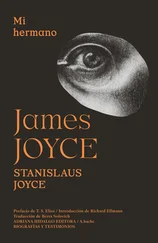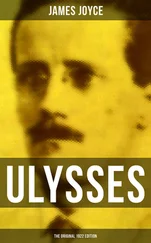JAMES JOYCE - ULYSSES
Здесь есть возможность читать онлайн «JAMES JOYCE - ULYSSES» весь текст электронной книги совершенно бесплатно (целиком полную версию без сокращений). В некоторых случаях можно слушать аудио, скачать через торрент в формате fb2 и присутствует краткое содержание. Жанр: Классическая проза, на английском языке. Описание произведения, (предисловие) а так же отзывы посетителей доступны на портале библиотеки ЛибКат.
- Название:ULYSSES
- Автор:
- Жанр:
- Год:неизвестен
- ISBN:нет данных
- Рейтинг книги:3 / 5. Голосов: 1
-
Избранное:Добавить в избранное
- Отзывы:
-
Ваша оценка:
- 60
- 1
- 2
- 3
- 4
- 5
ULYSSES: краткое содержание, описание и аннотация
Предлагаем к чтению аннотацию, описание, краткое содержание или предисловие (зависит от того, что написал сам автор книги «ULYSSES»). Если вы не нашли необходимую информацию о книге — напишите в комментариях, мы постараемся отыскать её.
ULYSSES — читать онлайн бесплатно полную книгу (весь текст) целиком
Ниже представлен текст книги, разбитый по страницам. Система сохранения места последней прочитанной страницы, позволяет с удобством читать онлайн бесплатно книгу «ULYSSES», без необходимости каждый раз заново искать на чём Вы остановились. Поставьте закладку, и сможете в любой момент перейти на страницу, на которой закончили чтение.
Интервал:
Закладка:
Gabler decided at the beginning of his work that traditional copytext methods would not work well for the textual situation that Ulysses presents. At least three factors led to this decision: the manuscript, which does provide a beginning-to-end version in JoyceТs hand, is too far removed from the extensively augmented text that Ulysses eventually became; the typescripts and proofs are steps along the way in the process of expansion; and the first edition is too filled with errors. 2 Gabler looked to German genetic editing, which is oriented more towards authorial revision than towards transmissional corruption, and also to Fredson BowersТs work within the copytext-editing tradition on constructed, or what Gabler calls СvirtualТ, documents as copytext. Bowers demonstrated that a copytext can be a lost or virtual document when he edited Stephen CraneТs stories and Henry FieldingТs Tom Jones. In the case of Crane two surviving versions of a story that each descend directly from a lost original were used to recreate the lost original document, and the recreated document served as copytext. For Fielding the accidentals of one document (the first edition of Tom Jones ) were merged with the substantives of another (the fourth edition), and this constructed hypothetical document became the copytext. In the implications of these examples Gabler saw a way of meeting the challenge of the complex textual situation presented by Ulysses. He reasoned that JoyceТs activity on the prepublication documents from the final working draft through to the final page proofsЧhis manuscript inscription plus all the additions to the typescript and proofsЧcan add up to a manuscript of the whole book, even though a virtual one. In one of the editionТs major innovations he reconstructs this virtual manuscript, calling it the Сcontinuous manuscriptТ of Ulysses, and uses it as the editionТs copytext.
In assembling the continuous manuscript the editor makes an important distinction between a СdocumentТ and a СtextТ. If an author writes out a story and then returns to its pages twice to revise it, there is only one document but three distinguishable texts (the original story, the original with one set of revisions, the original with both sets). Most of the extant documents for Ulysses contain more than one text. Typical cases are manuscripts with JoyceТs handwritten text plus his subsequent revisions, typescripts with the typed version plus one or two rounds of correction and revision in JoyceТs hand, and proofs which contain the printed version plus JoyceТs corrections and revisions. When documents are missingЧas is the final working draft where it served as copy for the typist; three chapters in typescript where the extant fair copy served as copy; and small sections of the proofsЧthe surviving documents can serve as evidence for the text contained on the missing ones that immediately preceded them. For example, the first set of proofs will show as printed text the material that Joyce presumably entered in his handwritten additions on a lost typescript page. Thus, an editor can reason that while the documents may not all survive, all the text is recoverable either through direct evidence or through recreation by extrapolation from the extant documents. The Сcontinuous manuscriptТ (the conflation of all JoyceТs handwriting on the manuscript and in the corrections and revisions on the typescripts and proofs) remains a virtual document, but the continuous manuscript text can thus be created as something now real. This is what Gabler has done. What he calls the Сsynoptic textТ presents, on the left-hand pages of Ulysses: A Critical and Synoptic Edition, the construction of the continuous manuscript text. The synopsis is accomplished through an elaborately coded system that indicates all JoyceТs revisions, additions, and deletions, including the stage at which each change occurred. Also, the editorТs decisions, including his transcriptions of the manuscript and his choices as to which of JoyceТ variant words (when there is more than one possibility at a particular place) are retained in the continuous manuscript text, are on display for all readers to observe and to assess.
It is accurate to say that the continuous manuscript text was assembled or created or recreated or constructed, but it was not created by copytext editing. Once it was assembled, the continuous manuscript text became the copytext for Gabler's edition, but until it came into existence there was no copytext at all. (Much of the discussion of the edition has been confused on this matter, assuming incorrectly that the Rosenbach Manuscript or the typescript is the copytext for the continuous manuscript text.) Gabler constructed the continuous manuscript text, in his words, Сas Joyce wroteТ Ulysses. This means building the text up, stage by stage, from the working draft towards the goal of the first edition text as it would have appeared had no mistakes been made. The straightforward reconstruction becomes complicated when documents are missing or when something Joyce wrote on one document was not typed or printed and so not transmitted through the production process.
Like almost all editors, Gabler dismissed as a working principle the concept of Сpassive authorization,Т the idea that because Joyce left an error standing or did not restore a reading as he read proof he must have wanted the resulting reading in the book. But to accompany such a rejection an editor needs procedures to help determine when to accept a reading that the author did not restore and when not. Two procedures are especially important. First, any text handwritten by Joyce was presumed to be authoritative and hence admissible into the text unless it could be proved to be faulty. Conversely, any transmitted (typed or printed) text was considered to be potentially faulty unless it proved to possess authority. Second is GablerТs Сrule of the invariant context,Т which means that a word or passage from an earlier document could be admitted into the text only if the context around it (words, sentence, paragraphЧthe scope of the context varies from example to example) underwent no change, thus remaining invariant. These procedures have led to an important, and controversial, aspect of the edition. Several words and passages appear in the Rosenbach Manuscript but presumably not in the final working draft that was used by the typist and is now lost; these words and passages thus were never typed or printed. When Gabler judged them to be JoyceТs revisions as he made his fair copy of the working draft and when their context remained invariant, he admitted them into the continuous manuscript text on the grounds that they represent the fullest development of the text. Some examples will be given later on.
One further note about the continuous manuscript text: it was not constructed in order to fulfill what is known as Сauthorial intention.Т Gabler's phrase, С Ulysses as Joyce wrote it,Т refers to JoyceТs activity as he created Ulysses both in the extant documents and by inference from those documents to the lost ones. The editor studied what Joyce did, not what the editor thought Joyce meant or intended. This makes his edition one oriented towards the text (the authorТs text in this case more than, say, the published text) but not towards intention. The framework of genetic editing supplies editors with a set of premises and methods in which an edited text is built from the ground up with each stage considered as a version, a distinguishable self-contained text that does not need to be justified in terms of the author and the authorТs intentions. The variants between one version and the next are seen not as errors to be corrected but as revisions in a changing text. On the whole, the variants in a many-layered manuscriptЧsuch as the extreme example of the continuous manuscript of UlyssesЧ that will go together to form each identifiable version will be self-evident from the process of the writingТs development. But enough instances of alternatives usually remain where the editor must exercise critical judgment. The grounds for this judgment can be procedural ones, such as the priority given to JoyceТs own inscription or the rule of the invariant context that determined whether a reading was marked as valid or deleted in the continuous manuscript text, or they can be decisions that the editor had to make on the basis of his understanding of the kinds of revision Joyce was likely to make at the pertinent stage of his work on Ulysses.
Читать дальшеИнтервал:
Закладка:
Похожие книги на «ULYSSES»
Представляем Вашему вниманию похожие книги на «ULYSSES» списком для выбора. Мы отобрали схожую по названию и смыслу литературу в надежде предоставить читателям больше вариантов отыскать новые, интересные, ещё непрочитанные произведения.
Обсуждение, отзывы о книге «ULYSSES» и просто собственные мнения читателей. Оставьте ваши комментарии, напишите, что Вы думаете о произведении, его смысле или главных героях. Укажите что конкретно понравилось, а что нет, и почему Вы так считаете.





